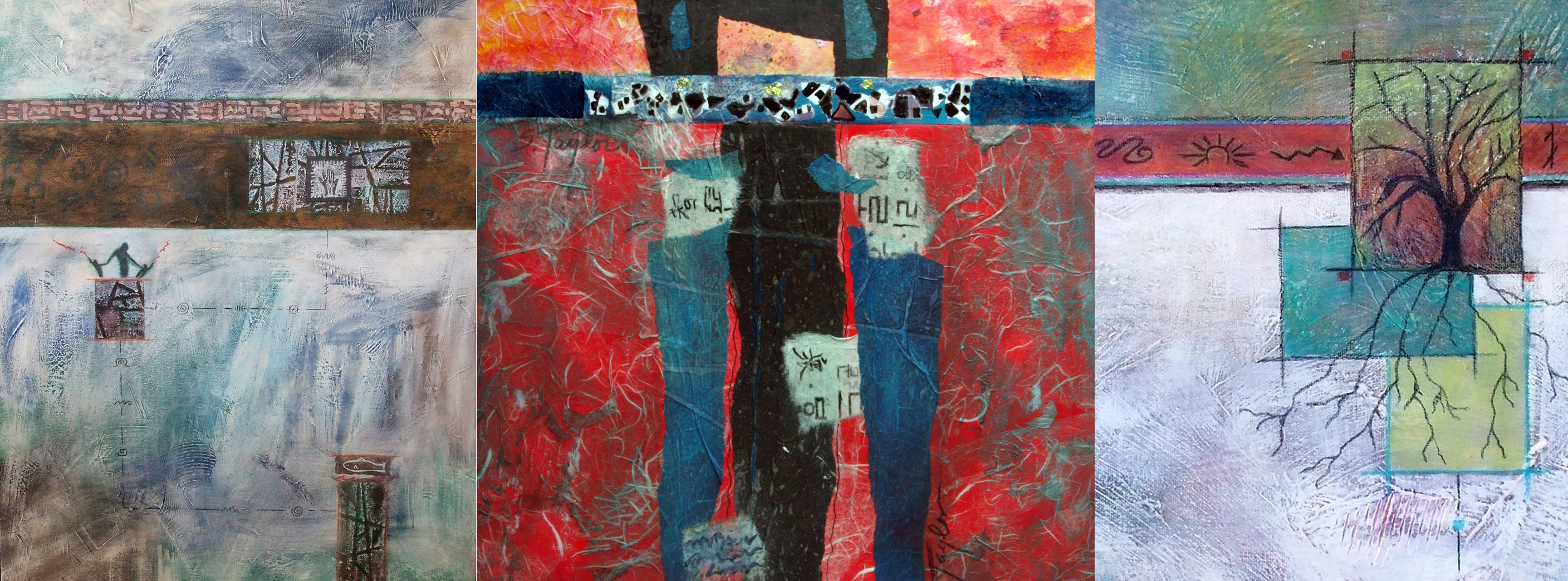
Sandy Taylor (1937—2016) was an important, ever-present participant in the evolution of Bloomington’s art scene for many decades. As a professional flutist, she was a lauded performer, teacher, and composer. As a visual artist, Sandy at first worked two-dimensionally with multiple paint media and collage and later had a successful career designing and fabricating jewelry of simple geometric constructions embellished with rich patination. As an arts advocate and organizer, the she was deeply involved with a number of organizations, most particularly the 4th Street Festival of the Arts and the Unitarian Universalist Holiday Bazaar, serving on the steering committees for many years. Sandy Taylor passed away after an accident last year and this exhibition of a selection of her paintings, representing a recent return to the media, is a tribute to her unquenchable search for beauty and her profoundly generous spirit and gifts to the arts in our community.
When already a professional flutist and composer, Sandy began an exploration in paint and mark-making as another means of expression in the 1960s. She was inspired by the lyrical brushstrokes of Abstract Expressionist Franz Kline and the gestural marks constrained by a formal elegance in the work of Helen Frankenthaler. Taylor created large canvases of sonorous arranged, broadly painted, expressive fields of color counter-balanced with hard, abruptly edged shapes sparring for control.
After forty years of a rich interdisciplinary focus, Sandy’s abstractions congealed into a style that seemed to synthesize the automatic gesture, layered and textured fields of subtle color, and pictographic emblems. The symbols were culled randomly from various cultures, eschewing any precise reference, but were suggestive of that which is elemental or archetypal, in keeping with Taylor’s life-long study of Jungian theory. The paint’s texture exposes impasto layers of color and mark, revealing partially hidden scripts beneath the surface displaying a different sort of patination. The compositions were often broken down geometrically divided by a band suggestive of an architectural frieze and scribed or extracted through sgraffito, unreadable texts or glyphs of fish and animal or human figures.
Opening Reception: Friday, March 3rd, 5-8 PM
On Display: March 3rd – April 8th
